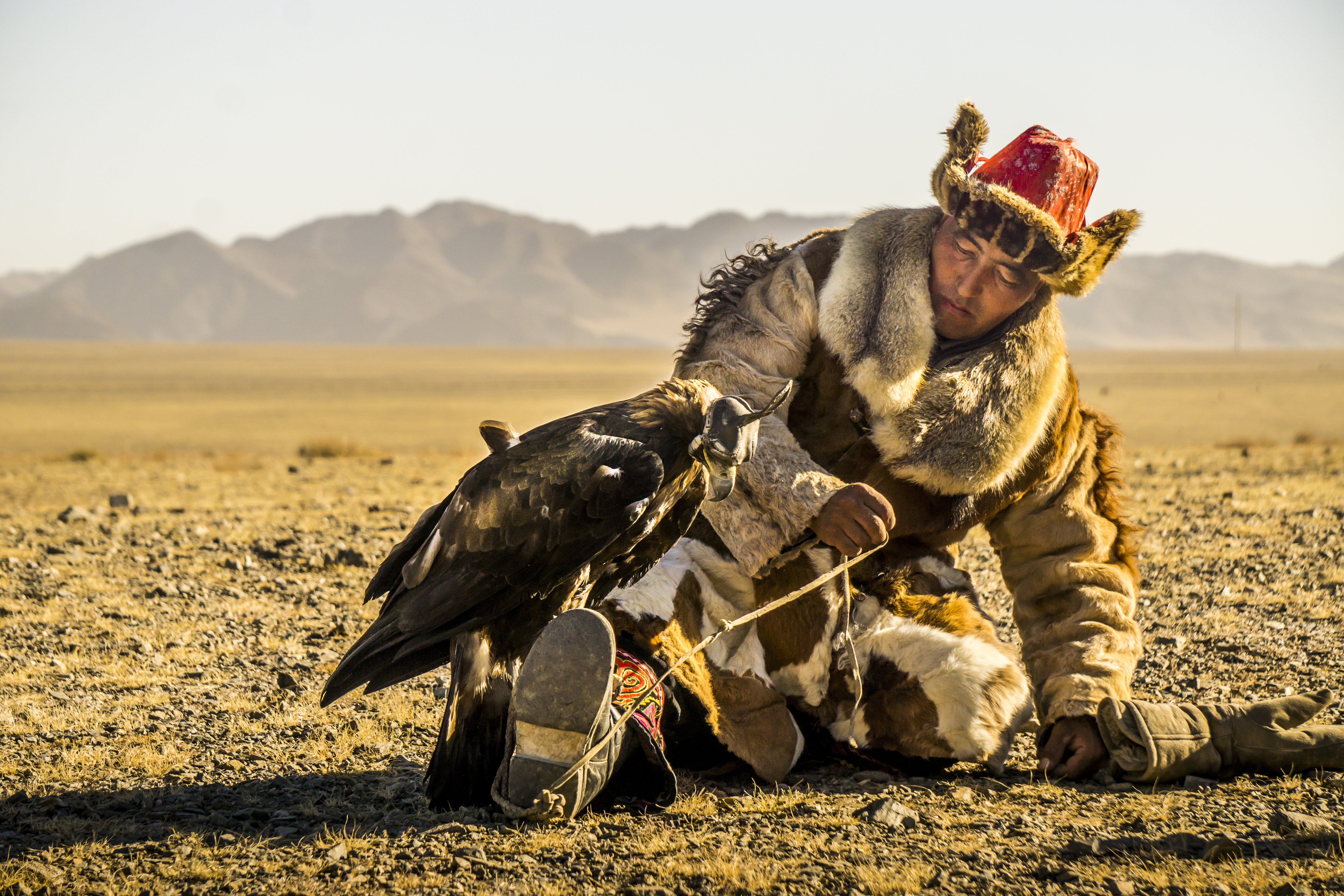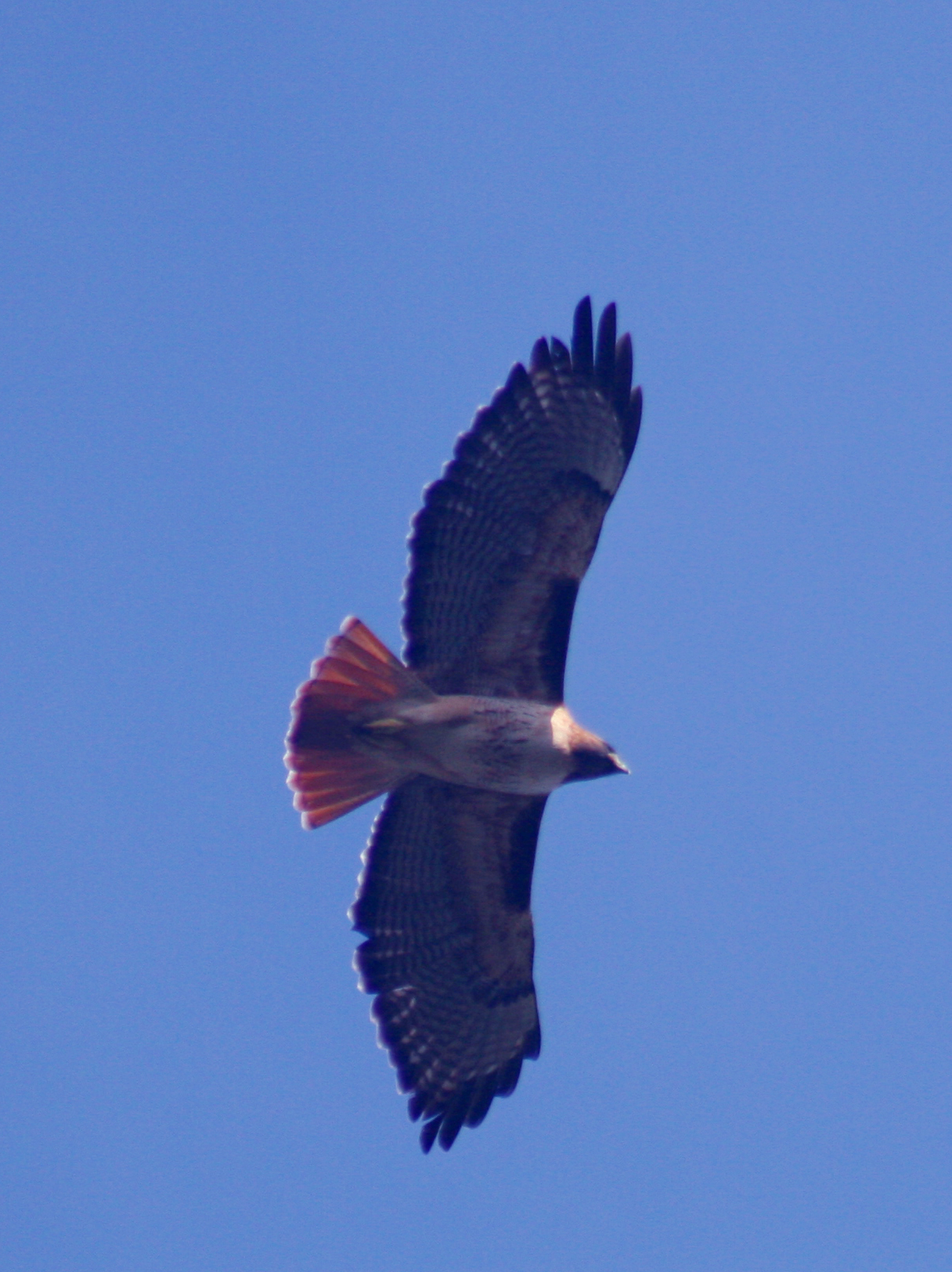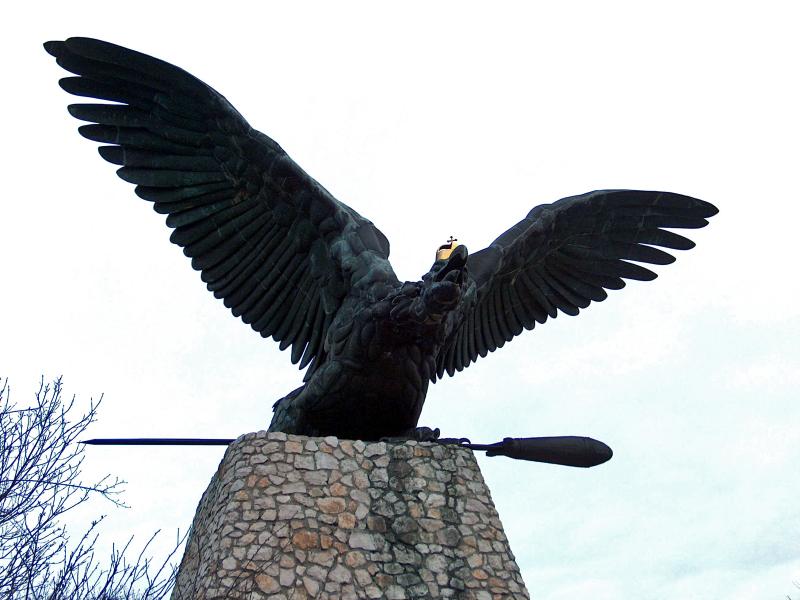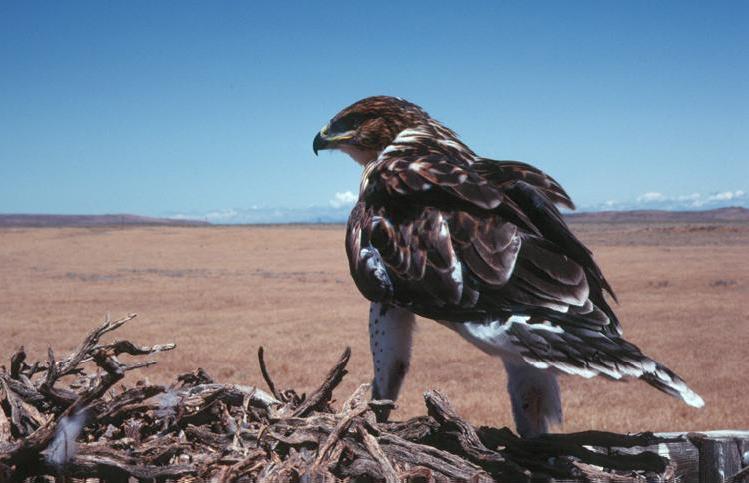|
Falconry
Falconry is the hunting of wild animals in their natural state and habitat by means of a trained bird of prey. Small animals are hunted; squirrels and rabbits often fall prey to these birds. Two traditional terms are used to describe a person involved in falconry: a "falconer" flies a falcon; an "austringer" (Old French origin) keeps Eurasian goshawks and uses hawk, accipiters for hunting. In modern falconry, the red-tailed hawk (''Buteo jamaicensis''), Harris's hawk (''Parabuteo unicinctus''), and the peregrine falcon (''Falco perigrinus'') are some of the more commonly used birds of prey. The practice of hunting with a conditioned falconry bird is also called "hawking" or "gamehawking", although the words wikt:hawking, hawking and peddler, hawker have become used so much to refer to petty traveling traders, that the terms "falconer" and "falconry" now apply to most use of trained birds of prey to catch game. However, many contemporary practitioners still use these words in the ... [...More Info...] [...Related Items...] OR: [Wikipedia] [Google] [Baidu] |
Eurasian Sparrowhawk
The Eurasian sparrowhawk (''Accipiter nisus''), also known as the northern sparrowhawk or simply the sparrowhawk, is a small bird of prey in the family Accipitridae. Adult male Eurasian sparrowhawks have bluish grey upperparts and orange-barred underparts; females and juveniles are brown above with brown barring below. The female is up to 25% larger than the male – one of the greatest size differences between the sexes in any bird species. Though it is a predator which specialises in catching woodland birds, the Eurasian sparrowhawk can be found in any habitat and often hunts garden birds in towns and cities. Males tend to take smaller birds, including Tit (bird), tits, finches and Old World sparrow, sparrows; females catch primarily Thrush (bird), thrushes and starlings but are capable of killing birds weighing or more. The Eurasian sparrowhawk is found throughout the temperate and subtropical parts of the Old World; whilst birds from the northern parts of the range Bird mig ... [...More Info...] [...Related Items...] OR: [Wikipedia] [Google] [Baidu] |
Eurasian Goshawk
The Eurasian goshawk (; ''Astur gentilis'', formerly ''Accipiter gentilis'') is a species of medium-large bird of prey in the Family (biology), family Accipitridae, a family which also includes other extant diurnal raptors, such as eagles, buzzards and harrier (bird), harriers. It was formerly placed in the genus ''Accipiter''. It is a widespread species that inhabits many of the temperate parts of Eurasia. Except in a small portion of southern Asia, it is the only species of "goshawk" in its range and it is thus often referred to, both officially and unofficially, as simply goshawk. It is mainly resident bird, resident, but birds from colder regions bird migration, migrate south for the winter. As of 2023, goshawks found in North America are no longer considered be conspecific, but are now designated as the American goshawk (''Astur atricapillus''). Taxonomy The Eurasian goshawk was Species description, formally described in 1758 by the Swedish naturalist Carl Linnaeus in the 10 ... [...More Info...] [...Related Items...] OR: [Wikipedia] [Google] [Baidu] |
Red-tailed Hawk
The red-tailed hawk (''Buteo jamaicensis'') is a bird of prey that breeds throughout most of North America, from the interior of Alaska and northern Canada to as far south as Panama and the West Indies. It is one of the most common members of the genus ''Buteo''. The red-tailed hawk is one of three species colloquially known in the United States as the "Chickenhawk (bird), chickenhawk", though it rarely preys on standard-sized chickens. Red-tailed hawks can acclimate to all the biomes within their range, occurring on the edges of non-ideal habitats such as dense forests and sandy deserts.Preston, C. R. (2000). ''Red-tailed Hawk''. Stackpole Books. The red-tailed hawk occupies a wide range of habitats and altitudes, including deserts, grasslands, coniferous and deciduous forests, Agricultural land, agricultural fields, and Urbanization, urban areas. Its latitudinal limits fall around the tree line in the subarctic and it is absent from the high Arctic. It favors varied habitats ... [...More Info...] [...Related Items...] OR: [Wikipedia] [Google] [Baidu] |
Peregrine Falcon
The peregrine falcon (''Falco peregrinus''), also known simply as the peregrine, is a Cosmopolitan distribution, cosmopolitan bird of prey (raptor) in the family (biology), family Falconidae renowned for its speed. A large, Corvus (genus), crow-sized falcon, it has a blue-grey back, barred white underparts, and a black head. As is typical for avivore, bird-eating (avivore) raptors, peregrine falcons are Sexual dimorphism, sexually dimorphic, with females being considerably larger than males. Historically, it has also been known as "black-cheeked falcon" in Australia, and "duck hawk" in North America. The breeding range includes land regions from the Arctic tundra to the tropics. It can be found nearly everywhere on Earth, except extreme polar regions, very high mountains, and most tropical rainforests; the only major ice-free landmass from which it is entirely absent is New Zealand. This makes it the world's most widespread Raptor (bird), raptor and one of the most widely found ... [...More Info...] [...Related Items...] OR: [Wikipedia] [Google] [Baidu] |
Harris's Hawk
Harris's hawk (''Parabuteo unicinctus''), formerly also known as bay-winged hawk or dusky hawk, and known in Latin America as the peuco, is a medium-large bird of prey that breeds from the southwestern United States south to Chile, central Argentina, and Brazil. The name is derived from the Greek language, Greek ''para'', meaning beside, near or like, and the Latin ''buteo'', referring to a kind of buzzard; ''uni'' meaning once; and ''cinctus'' meaning girdled, referring to the white band at the tip of the tail. John James Audubon gave this bird its English name in honor of his ornithological companion, financial supporter, and friend Edward Harris (ornithologist), Edward Harris. Harris's hawk is notable for its behavior of hunting cooperatively in Pack hunter, packs consisting of tolerant groups, while other raptors often hunt alone. Harris's hawks' social nature has been attributed to their intelligence, which makes them easy to train and has made them a popular bird for use in ... [...More Info...] [...Related Items...] OR: [Wikipedia] [Google] [Baidu] |
Hawk
Hawks are birds of prey of the family Accipitridae. They are very widely distributed and are found on all continents, except Antarctica. The subfamily Accipitrinae includes goshawks, sparrowhawks, sharp-shinned hawks, and others. This subfamily are mainly woodland birds with short broad wings, long tails, and high visual acuity. They hunt by dashing suddenly from a concealed perch. In America, members of the '' Buteo'' group are also called hawks, though birds of this group are called buzzards in other parts of the world. Generally, buteos have broad wings and sturdy builds. They are relatively larger-winged and shorter-tailed than accipiters, and fly further distances in open areas. Buteos descend or pounce on their prey rather than engaging in fast, horizontal pursuit. The terms ''accipitrine hawk'' and ''buteonine hawk'' are used to distinguish between the types in regions where ''hawk'' applies to both. The term ''"true hawk"'' is sometimes used for the accipitrin ... [...More Info...] [...Related Items...] OR: [Wikipedia] [Google] [Baidu] |
Falcon
Falcons () are birds of prey in the genus ''Falco'', which includes about 40 species. Some small species of falcons with long, narrow wings are called hobbies, and some that hover while hunting are called kestrels. Falcons are widely distributed on all continents of the world except Antarctica, though closely related raptors did occur there in the Eocene. Adult falcons have thin, tapered wings, which enable them to fly at high speed and change direction rapidly. Fledgling falcons, in their first year of flying, have longer flight feathers, which make their configuration more like that of a general-purpose bird such as a broadwing. This makes flying easier while still learning the aerial skills required to be effective hunters like the adults. The falcons are the largest genus in the Falconinae subfamily of Falconidae, which also includes two other subfamilies comprising caracaras and a few other species of "falcons". All these birds kill prey with their beaks, using a ... [...More Info...] [...Related Items...] OR: [Wikipedia] [Google] [Baidu] |
Saker Falcon
The saker falcon (Falco cherrug) is a large falcon species. It breeds from Central Europe eastwards across the Palearctic to Manchuria. It is a partial migrant, which means that some part of the population is migratory, some part is not. In Europe, for example, a part othe juveniles are migrating while adults are mostly resident. The European and West Asian migratory sakers spend the winter in the Sahel region. On migration, they cross the Middle East, the Arabian Peninsula, and Pakistan, where they are exposed to illegal trapping. The migratory birds to the east from Altai Mountains spend the winter in the Qinghai-Tibet Plateau. The saker falcon is the second fastest bird in level flight after the white-throated needletail swift (unconfirmed), capable of reaching . It is also the third fastest animal in the world overall after the peregrine falcon and the golden eagle, with all three species capable of executing high speed dives known as "stooping", approaching . The saker fa ... [...More Info...] [...Related Items...] OR: [Wikipedia] [Google] [Baidu] |
Cooper's Hawk
Cooper's hawk (''Astur cooperii'') is a medium-sized hawk native to the North American continent and found from southern Canada to Mexico. This species was formerly placed in the genus ''Accipiter''. As in many birds of prey, the male is smaller than the female.Snyder, N. F., & Wiley, J. W. (1976). ''Sexual size dimorphism in hawks and owls of North America (No. 20)''. American Ornithologists' Union. The birds found east of the Mississippi River tend to be larger on average than the birds found to the west.Pearlstine, E. V., & Thompson, D. B. (2004). ''Geographic variation in morphology of four species of migratory raptors''. Journal of Raptor Research, 38(4), 334–342. It is easily confused with the smaller but similar sharp-shinned hawk. (''Accipiter striatus'') The species was named in 1828 by Charles Lucien Bonaparte in honor of his friend and fellow ornithologist, William Cooper (conchologist), William Cooper.Palmer, R. S., ed. (1988). ''Handbook of North American birds. ... [...More Info...] [...Related Items...] OR: [Wikipedia] [Google] [Baidu] |
Falcon
Falcons () are birds of prey in the genus ''Falco'', which includes about 40 species. Some small species of falcons with long, narrow wings are called hobbies, and some that hover while hunting are called kestrels. Falcons are widely distributed on all continents of the world except Antarctica, though closely related raptors did occur there in the Eocene. Adult falcons have thin, tapered wings, which enable them to fly at high speed and change direction rapidly. Fledgling falcons, in their first year of flying, have longer flight feathers, which make their configuration more like that of a general-purpose bird such as a broadwing. This makes flying easier while still learning the aerial skills required to be effective hunters like the adults. The falcons are the largest genus in the Falconinae subfamily of Falconidae, which also includes two other subfamilies comprising caracaras and a few other species of "falcons". All these birds kill prey with their beaks, using a ... [...More Info...] [...Related Items...] OR: [Wikipedia] [Google] [Baidu] |
Ferruginous Hawk
The ferruginous hawk (''Buteo regalis'') is a large bird of prey and belongs to the broad-winged buteo hawks. An old colloquial name is ferrugineous rough-leg, due to its similarity to the closely related rough-legged hawk (''B. lagopus''). The generic name ''buteo'' is Latin for 'buzzard'. The specific epithet ''regalis'' is Latin for 'royal' (from ''rex, regis'', 'king'). The common name 'ferruginous' means 'rust-colored' or 'reddish-brown'. This species is a large, broad-winged hawk of the open, arid grasslands, prairie and shrub steppe country; it is endemic to the interior parts of North America. It is used as a falconry bird in its native ranges. Description This is the largest of the North American ''Buteos'' and is often mistaken for an eagle due to its size, proportions, and behavior. Among all the nearly thirty species of ''Buteo'' in the world, only the upland buzzard (''B. hemilasius'') of Asia averages larger in length and wingspan. The weight of the upland buzz ... [...More Info...] [...Related Items...] OR: [Wikipedia] [Google] [Baidu] |
Accipiter
''Accipiter'' () is a genus of birds of prey in the family Accipitridae. Some species are called sparrowhawks, but there are many sparrowhawks in other genera such as '' Tachyspiza''. These birds are slender with short, broad, rounded wings and a long tail which helps them maneuver in flight. They have long legs and long, sharp talons used to kill their prey, and a sharp, hooked bill used in feeding. Females tend to be larger than males. They often ambush their prey, mainly small birds and mammals, capturing them after a short chase. The typical flight pattern is a series of flaps followed by a short glide. They are commonly found in wooded or shrubby areas. The genus ''Accipiter'' was introduced by the French zoologist Mathurin Jacques Brisson in 1760. The type species is the Eurasian sparrowhawk (''Accipiter nisus''). The name is Latin for "hawk", from ''accipere'', "to grasp". Procoracoid foramen The procoracoid foramen (or coracoid foramen, coracoid fenestra) is a hole thr ... [...More Info...] [...Related Items...] OR: [Wikipedia] [Google] [Baidu] |








